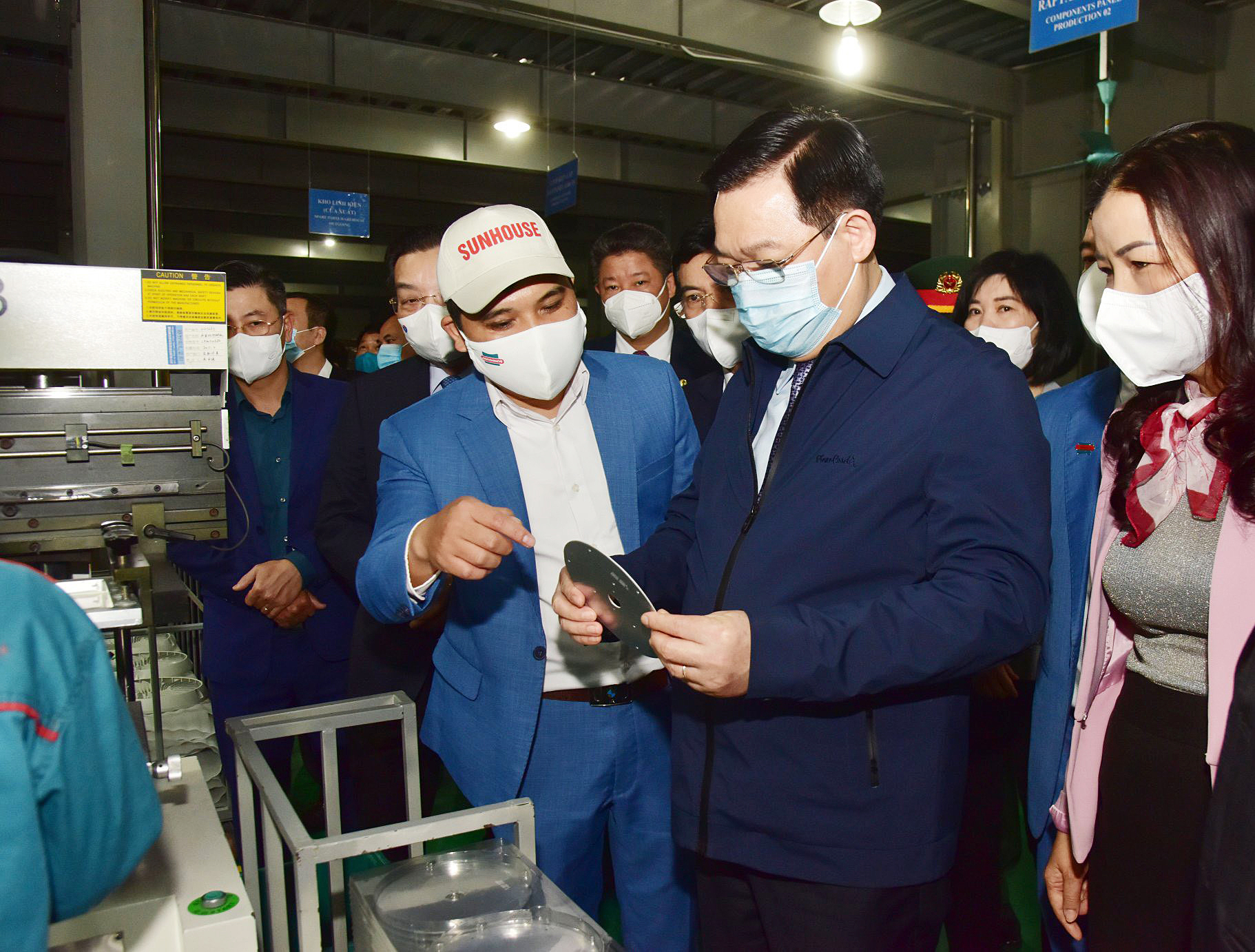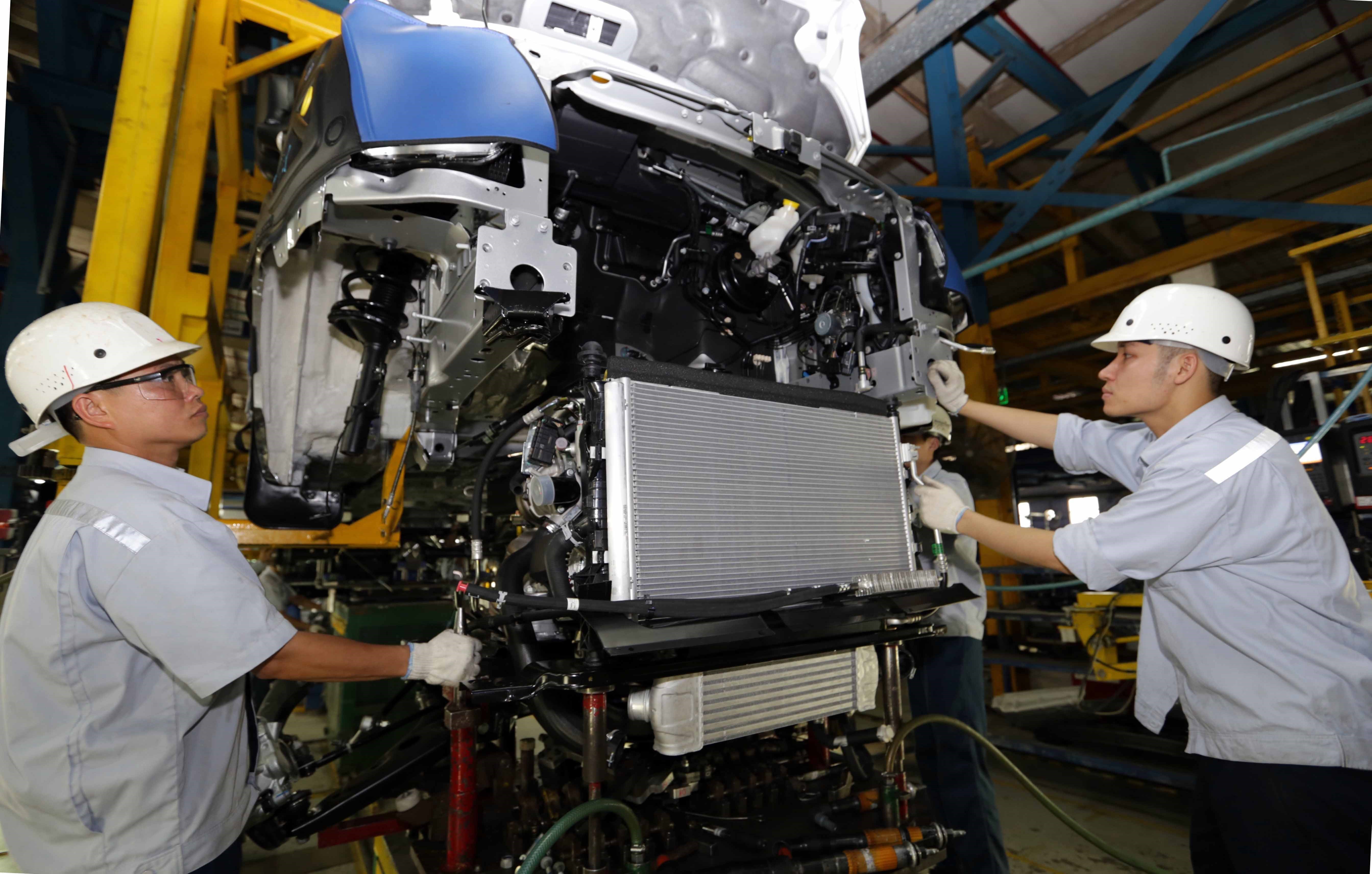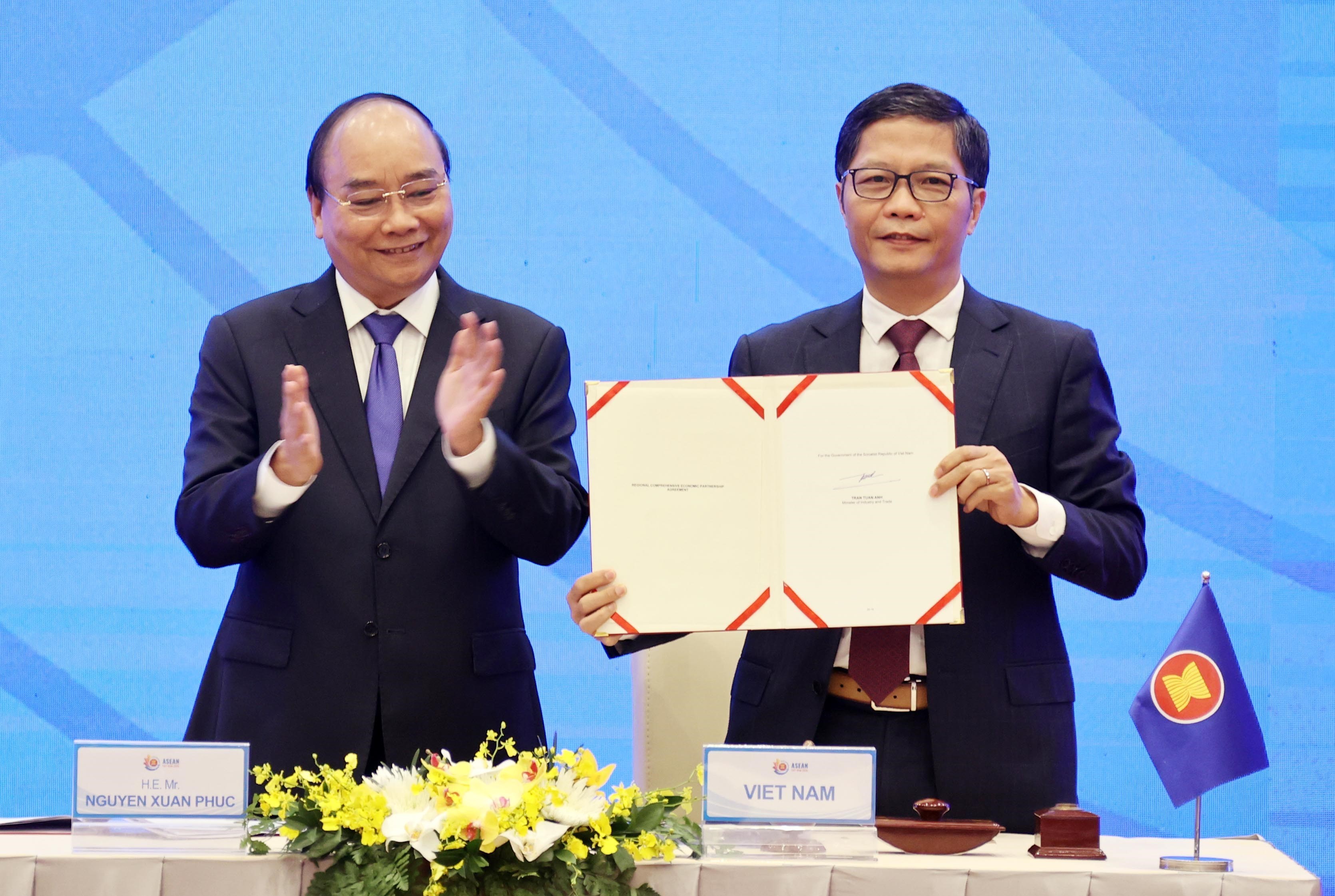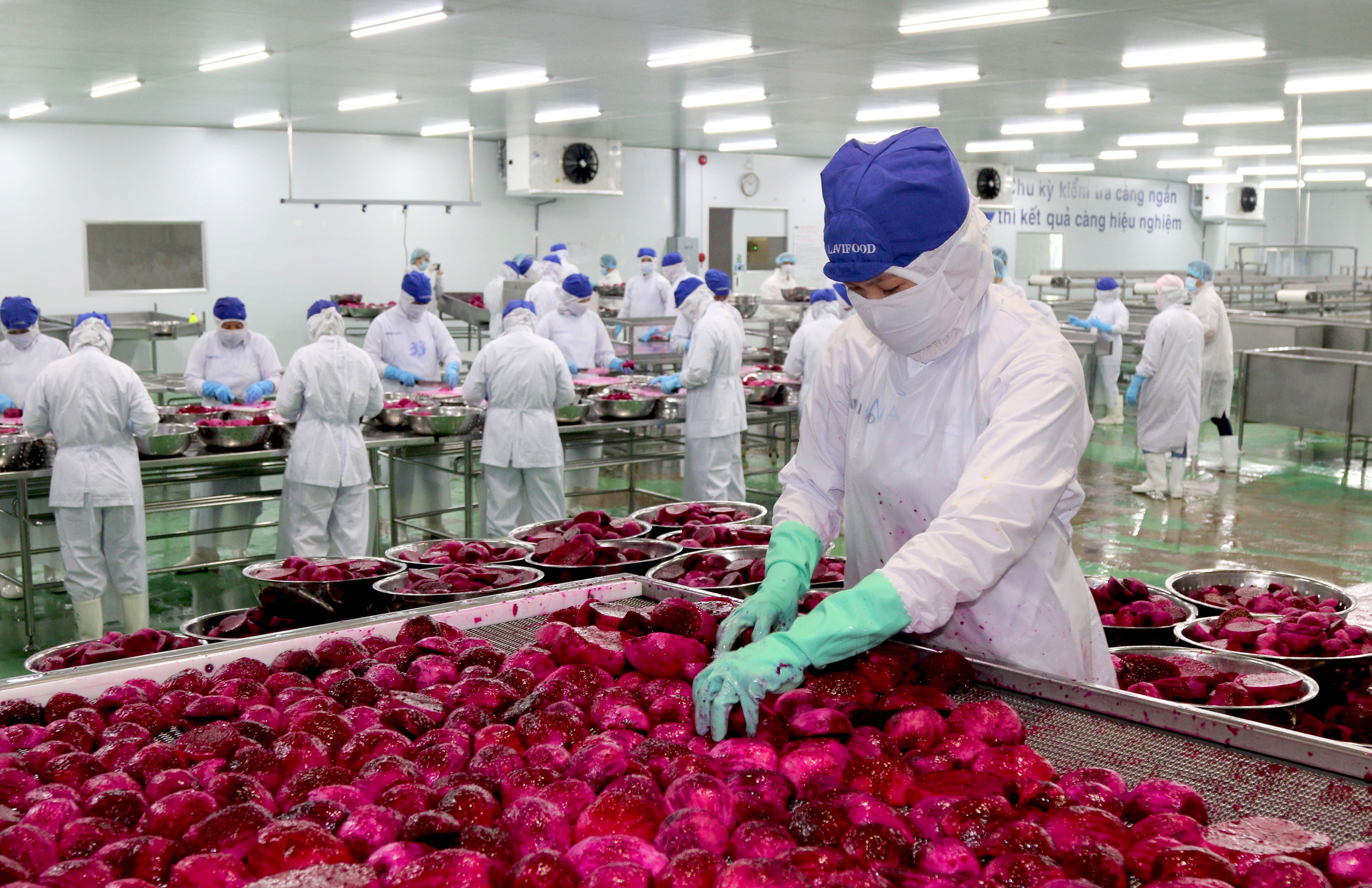Vietnam’s recovery and development of new supply chains and value chains during and after COVID-19
Monday, July 12, 2021 09:05
Communist Review - The outbreak of COVID-19 has set off an unprecedented ripple and even comprehensive effect for all countries in the world. Indeed, the global economy fell into a severe recession. Vietnam's economy, with its great openness and extensive international integration, has been suffering multiple effects from this coronavirus disease . The health crisis is having a devastating effect on all social and economic sectors, leading to widespread disruptions to supply chains and trade flows, stagnation of production, business, and service activities... Therefore, Vietnam realizes that it is necessary to actively implement measures to take advantage of market opportunities, minimize difficulties, restore disrupted supply chains and value chains, build and develop new supply chains and value chains, thereby, shaping and establishing a new position of Vietnam in the global supply chain.

Vuong Dinh Hue, Politburo member, Secretary of the Hanoi Party Committee takes a factory visit for supervising the production line at SUNHOUSE Group Joint Stock Company (located in Ngoc Liep commune, Quoc Oai district, Hanoi city) _Photo: VNA
Economic and social disruptions caused by the COVID-19 crisis have significantly reduced global trade. The multilateral trading system and international economic linkages faced enormous difficulties. The WTO's recent forecast of October 2020 predicted a 9.2% drop in the volume of world merchandise trade in 2020. This forecast is much lower than the pre-pandemic trend. Also in October 2020, according to the International Monetary Fund (IMF), global trade is projected to collapse by nearly 10 percent in 2020, the same rate as during the 2009 financial crisis. Meanwhile, latest nowcasts from UNCTAD - United Nations Conference Trade and Development (run in December 2020) stated that the value of global merchandise trade is predicted to fall by 5.6% in 2020 compared with last year. This would be the biggest fall in merchandise trade since 2009.
Along with fierce rivalry among major powers, the COVID-19 pandemic has enabled many countries to re-evaluate their economic interdependence to enhance their self-reliance; nationalism, inward oriented trade, protectionism continue to increase. Investment relocation, supply chain and global value chain restructuring continue to be promoted in order to disperse or minimize risks. In the coming time, competition to attract investment and join the supply chain will become fiercer, especially among developing countries with similarities in market, development level, technology and human resources, such as Southeast Asian countries, India, Mexico, Turkey...
Although Vietnam’s GDP growth in 2020 advanced by 2.91%, the lowest rate in the period 2011-2020, in the time of COVID-19 pandemic affecting all areas of life, especially socio-economic life, this was still an outstanding success of our country in the group of highest growth rate in the world.
In the context that the COVID-19 has been complicatedly evolved in many countries around the world, complementing the dual goal of maintaining socio-political stability, promoting economic development and effective prevention and control of epidemic has created a “golden” opportunity for Vietnam to continue to strengthen its role, voice and position in the international arena, and at the same time become a safe investment destination for capital flows into Vietnam.

In the coming time, competition to attract investment and join the supply chain will become fiercer, especially among developing countries with similarities in market, development level, technology and human resources (Photo: Assembling cars at Ford Vietnam's factory, Hai Duong province) _Photo: VNA
In addition, Vietnam has also assessed impacts of COVID-19 on manufacturing and trade industries to see more clearly the difficulties and limitations of the national economy: The internal industrial capacity is still weak, manufacturing industries are heavily dependent on foreign supply chains, mainly on imported components, accessories and raw materials, leading to a great dependence on imported components and accessories, raw materials. This results in the very low added value of domestic industries. Moreover, the import of raw materials for manufacturing industry in some sectors depends on a small number of exporters, making domestic industries vulnerable to national and international political and socio-economic changes.
From what, the Communist Party of Vietnam has launched a policy to overcome the impact of pandemic to recover and develop the country's economy, identify short-term orientations and solutions as well as long-term ones. Accordingly, a due consideration has been given by the Ministry of Industry and Trade (MoIT) to drastically and synchronously implementing solutions to recover and develop new supply chains and value chains, diversify export - import markets, increase exports. Specifically, the solutions are as follows:
Firstly, strengthen and restructure supply chains for industrial production, create more sustainability and flexibility, and develope new supply chains.
The MoIT has been focusing on promoting the restructuring of industrial production with the highest priority to develop supporting industries, gradually reducing dependence on imported raw materials, components and accessories for a sustainable development of Vietnam industry in the long run. At the same time, the MoIT has made policies for downstream industries to expand market size to develop domestic supporting industries and attract investment, such as the Strategy for development of textile, garment and footwear Industry to 2030, with a vision to 2035; The program for sustainable development of textile, garment and footwear industry in the period 2021-2030 which aims to surmount challenges in terms of raw materials and auxiliary materials, support human resource training and explore Industry 4.0 with a particular focus on its application to digital design and manufacturing; accelerate green transformation of the Textile, Clothing, Leather and Footwear (TCLF) sector in order to improve its competitiveness. Moreover, Vietnam has made the most of new-generation free trade agreements (FTAs), such as the Comprehensive and Progressive Trans-Pacific Partnership Agreement (CPTPP), the Vietnam-EU free trade agreement (EVFTA) to further integrate the Textile, Clothing, Leather and Footwear sector into the global supply chain and value chain. Besides, a Decree on the development of key mechanical engineering industries has been also formulated. A consideration has been given to improving the operational efficiency of two technical centers supporting industrial development in the North and the South. These centers have been actively cooperating with multinational companies having a presence in Vietnam, such as Toyota, Mitsubishi, Canon,... to find and connect appropriate suppliers capable to join the value chain of these firms.

Politburo member, Prime Minister Nguyen Xuan Phuc and ASEAN Chairman 2020, member of Party Central Committee, Minister of Industry and Trade Tran Tuan Anh attend the signing ceremony of the Regional Comprehensive Economic Partnership Agreement (RCE) held in Hanoi on November 15, 2020 _Photo: VNA
Additionally, localities were also supported to have a better orientation in developing local industries, thereby promoting intra-regional, inter-regional and international linkages, creating a basis for territorial organization model and new production and business model, forming inter-connected supply chains and value chains, creating space for new supply chain development.
Furthermore, the database system of Vietnam’s processing, manufacturing and supporting industries has been established and officially launched by the MoIT. This is an important milestone in addressing the need to establish a domestic B2B connection network with foreign countries, helping enterprises and investors find information quickly, accurately, thus meeting the needs of investment connection, enhancing cooperation opportunities between Vietnamese enterprises and FDI enterprises and multinational companies. Especially in the context of disease outbreak when direct trading activities are facing various challenges, this system will play its role to the fullest extend in helping businesses connect with investors and enterprises, step by step distribute their goods and service in the global supply chain and value chain.
Secondly, focus on restructuring export products and export-import markets, exploit and diversify foreign markets, reduce dependence on a small number of foreign markets in the current context.
The scenario of exploitation and development of import - export markets according to groups of products where Vietnam has advantages, especially markets where Vietnam has signed FTAs has been reviewed. The most detailed research on customer tastes, market size, domestic production capacity... of each item in which Vietnam has strengths and enjoys preferential tariff treatment has been conducted immediately. The MoIT has worked separately with each association to clearly identify the products that Vietnam has advantages and determine a number of solutions to support potential industries which are able to further join in value chains.
In parallel, there is active coordination among relevant ministries, branches and agencies to prepare necessary conditions for effective implementation of EVFTA, such as internalizing the commitments in EVFTA; providing information and guidance to localities and business community about this Agreement by organizing conferences to support small and medium enterprises to make the most of opportunities and effectively implement the EVFTA, to give guidelines on the EU market access strategy for Vietnamese exporters in agricultural, forestry and fishery sector, hosting a conference to guide businesses to make effective use of EVFTA and provide useful information about EVFTA's tariff commitments so that they can proactively have plan for investment, production, and well prepare goods to enter these markets as soon as the Agreement comes into effect and thoroughly take advantage of opportunities after the epidemic is successfully controlled, then these markets will recover and need more goods. This is also an opportunity for Vietnamese goods to access and participate more deeply in the supply chain of European countries.
What is more, a website specializing in EVFTA (http://evfta.moit.gov.vn) was set up to provide information and explain the commitments specified in the EVFTA as well as connect with people and businesses. The MoIT has issued “Regulations on the rules of origin under EVFTA”. This is an important legal framework so that products originating in Vietnam exported to the EU are eligible for preferential certificate of origin when the Agreement comes into effect. The EVFTA took effect, creating great advantages for Vietnamese enterprises to participate in the global value chain, modernize equipment and technology in a more cost-effective manner so as to improve their capacity and competitiveness in the next time.

Workers at Lavifood Factory (Ben Luc, Long An province) process dragon fruits for export to the EU market _Photo: VNA
To what has been mentioned above, a wide range of market access measures have been applied in various forms to meet the new situation, such as maintaining and promoting bilateral trade relationship through the organization of direct phone calls between the Minister of Industry and Trade of Vietnam and Ministers in charge of Trade Management, High Commissioners for Trade of major markets like Australia, China, the EU, Canada and the ASEAN to discuss about trade cooperation, thereby overcoming difficulties in market access. Simultaneously, the Ministry has regularly reviewed and updated information on goods supply and demand, import demand of countries in the pandemic time, connected buyers' associations, importers and foreign suppliers with domestic enterprises. It has quickly established new methods of online market promotion, organized video conference to connect Vietnamese enterprises with potential importers in order to expand the market access for Vietnamese goods, thus building a new supply chain.
In particular, in 2020, Vietnam successfully signed the Regional Comprehensive Economic Partnership (RCEP) - an FTA including the 10 members of ASEAN and 5 countries with which ASEAN has signed FTAs. The members make up the largest market in the world in terms of population and account for one third of global gross domestic product. Therefore, the Agreement is expected to bring enormous opportunities for goods trade of Vietnam as well as other ASEAN members and partners in the near future. Along with CPTPP, EVFTA, RCEP is expected to be a favorable opportunity for all signatory countries as well as their businesses to restructure their supply chains and join the global value chain when the COVID-19 pandemic ends. Consequently, Vietnam as an open economy will be able to better exploit its new position, thereby building a position in the map of global supply chains.
Thirdly, establish and develop domestic commodity supply chains.
Measures to establish and develop commodity supply chains are continued to be implemented. The top priority has been given to measures to develop the supply chain of essential food and agricultural products in the domestic market, promote supply chain linkages, and strengthen linkages between producers and distributors and retailers, promote linkages throughout the whole supply chain. Moreover, the regulations on quality, food safety, and traceability of goods have also been well complied with. Vietnam has built totally Vietnamese linkage chains that meet requirements of international standards. At the same time, it has promoted supply - demand connection in the domestic market, stimulated domestic consumption to facilitate consumption of domestic products in traditional and modern distribution channels.
Focusing on recovering and participating more deeply in the global value chain, improving the independence and self-reliance in the economic development of our country in the coming time are not only a requirement but also a solution for Vietnam to overcome difficulties and challenges and seize the opportunity to realize the goal of rapid growth and sustainable development in the next period./.
This article was published in the Communist Review No. 962 (March 2021)